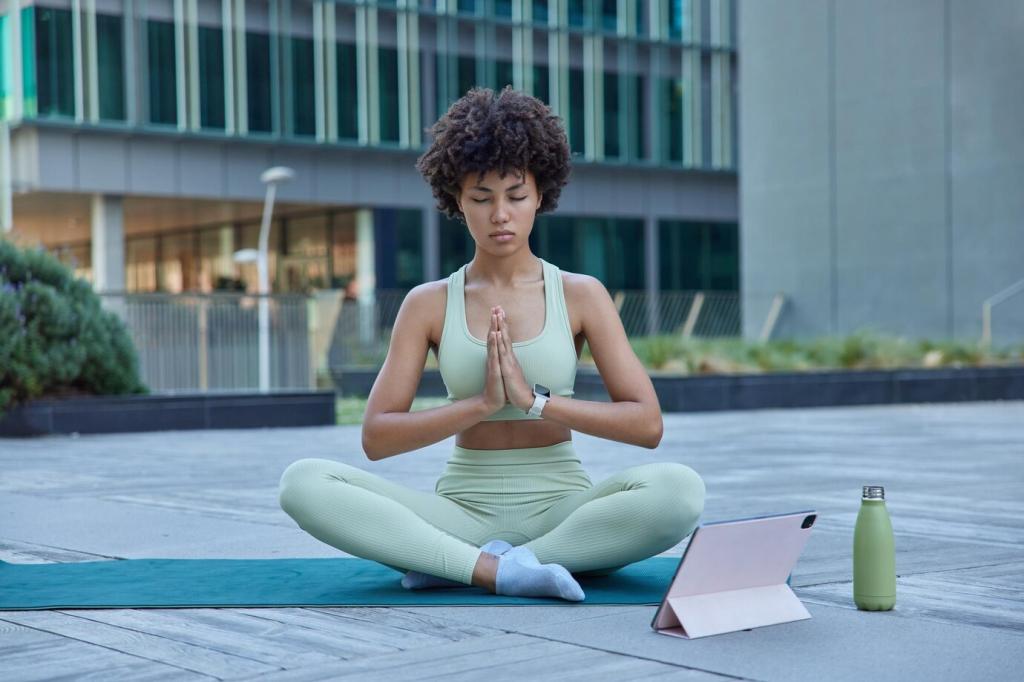Mindful Breathing: Essential Pranayama for Newcomers
Today’s chosen theme is “Mindful Breathing: Essential Pranayama for Newcomers.” Start gently, feel the breath with curiosity, and build confidence through simple, steady practices. Stay with us, share your experience, and subscribe for weekly breath-led guidance.
Start Where You Are: Foundations of Gentle Pranayama
Posture that invites the breath
Sit comfortably, hips supported on a cushion or folded blanket, spine tall yet relaxed, jaw soft, and shoulders un-gripped. Rest hands on thighs or belly. A stable, kind posture lets mindful breathing unfold without strain or fuss.
Setting intention and pace
Begin with a clear, compassionate intention: to notice, not to force. Keep early sessions short—two to five minutes—so your nervous system feels safe. Steady, repeatable, gentle practice grows trust faster than ambitious, exhausting routines.
Myths that make beginners hesitate
You do not need incense, silence, or extraordinary flexibility to start. Mindful breathing is for real life and busy minds. Small, consistent moments of awareness create change, even when thoughts wander and the day feels noisy.
Three-Part Breath (Dirgha) made simple
Place one hand on the belly, one on the ribs. Inhale to belly, expand ribs, softly lift chest; exhale chest, ribs, belly. Slow, even waves teach your body mindful breathing rhythms without tension or urgency.
Equal Breathing (Sama Vritti) for steady nerves
Count a smooth four in, four out. Keep the breath soft, not heroic. Equal count breathing supports focus before calls, study sessions, or creative work, offering a steady metronome for attention and emotional balance.
Alternate Nostril (Nadi Shodhana), the gentle way
Sit tall, relax your face. Close one nostril lightly, inhale through the other, switch, exhale. Repeat. Go slow, no force. This mindful breathing technique balances energy and calms mental chatter when practiced with patience.
What Your Body Learns: The Science of Calmer Breathing
Diaphragmatic breathing mobilizes the lower lungs, improving oxygen exchange and reducing accessory muscle overuse. As the diaphragm moves, it gently massages internal organs and signals safety to the nervous system, encouraging sustainable relaxation.


Daily Life Integrations That Actually Stick
One minute of equal breathing before emails, three ocean-soft breaths at red lights, or a quiet Dirgha break at three o’clock. These short anchors stabilize mood and focus without demanding extra time or special settings.
Daily Life Integrations That Actually Stick
Try four rounds of Nadi Shodhana before presenting, five minutes of Sama Vritti before studying, and a slow Dirgha sequence in bed. Pair mindful breathing with existing routines to prime your brain for calm engagement.
Stories From the First Week of Practice
Right before her slides loaded, Emma took four equal breaths, palms on the desk. Her voice steadied by the third sentence. She later emailed, amazed a minute of pranayama could feel like a friendly hand on her shoulder.

Safety, Adaptations, and When to Pause
If you feel dizzy, agitated, or breathless, stop and return to natural breathing. Shorten sessions, reduce counts, and choose softer techniques. Comfort is a sign of right effort, not a lack of ambition.
Safety, Adaptations, and When to Pause
If you have respiratory challenges, cardiovascular concerns, pregnancy, glaucoma, or frequent dizziness, practice conservatively and consult a qualified professional. Newcomers thrive with gradual, supervised progress and techniques that feel reliably steady.



